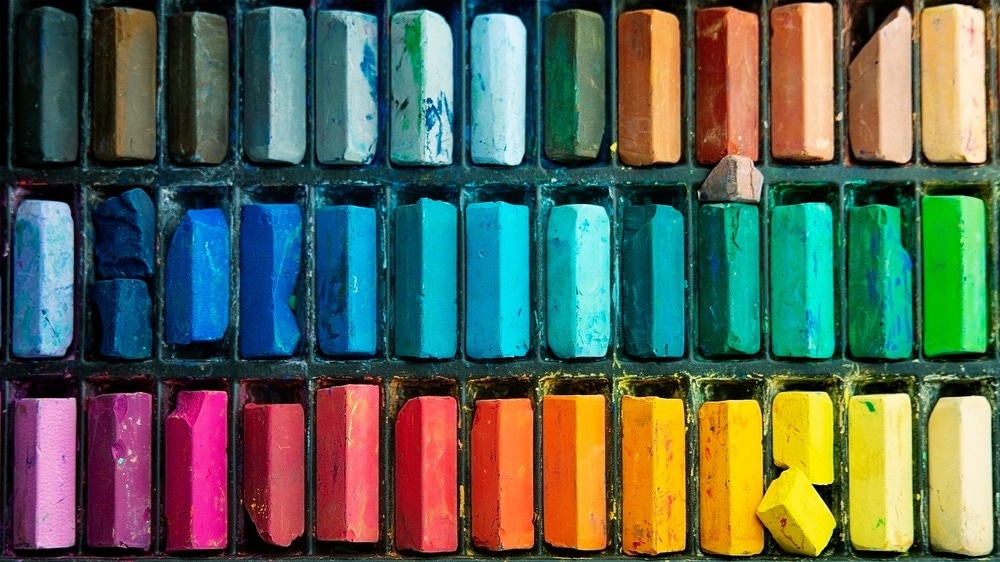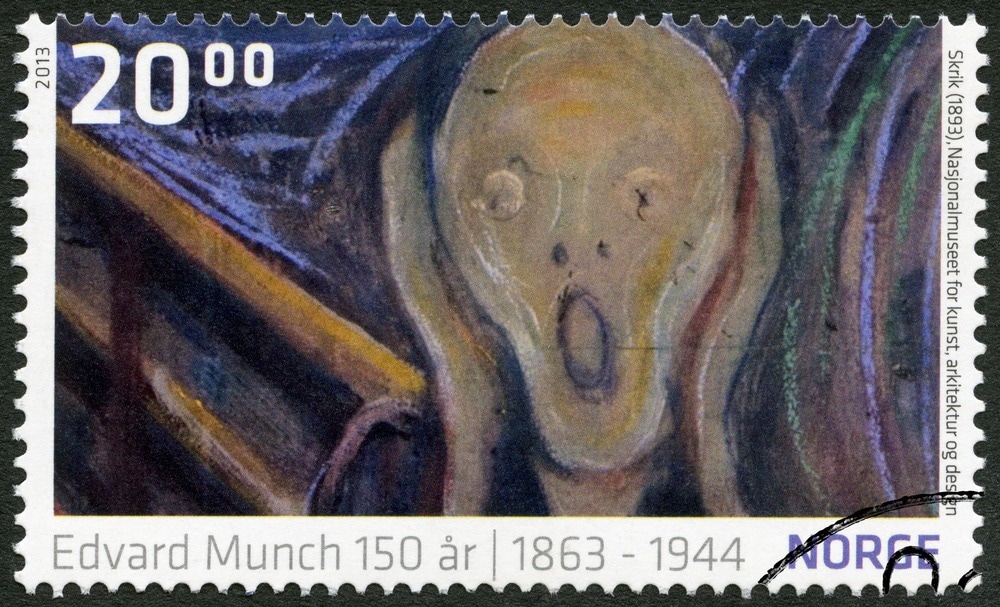Pastel crayons were an essential tool in the artist's toolkit in the nineteenth century and commanded a great deal of scientific interest as modern analytical techniques can reveal key information about the previously unknown formulation of these materials.
To date, pastel crayons have been less studied in comparison with other art materials. However, a recent study conducted by an Italian team of scientists has shown how analytical chemistry can be used to help us understand the composition of materials used by nineteenth-century artists. This information is fundamental to proper conservation strategies of artwork.

Image Credit: petroo.vi/Shutterstock.com
Investigating Munch's crayons
Norwegian expressionist painter Edvard Munch, best known for his work "The Scream", completed his world-renowned artwork during a time of great innovation in organic chemical synthesis and industrial research. At the time he was working as an artist, many new artistic materials were emerging, and he used many of these newly available products alongside traditional ones in his artworks.
The Munch Museum (MUNCH) collection, based in Olso, Norway, holds more than 26,000 pieces of original Edvard Munch artworks, including many of the artist's materials. Of these materials, around 300 are pastel crayons of different brands. It was an essential source of Munch's artistic materials that have never before received much scientific attention.
In a paper published in Nature in 2021, a team of scientists from the University of Pisa, Istituto CNR di Scienze e Tecnologie Chimiche, and Istituto CNR per le Scienze del Patrimonio Culturale (CNR-ISPC), describe how they used analytical chemistry techniques to characterize Munch's crayons. The study is part of MUNCH's core project that aims to gather new scientific knowledge of Munch's paintings and original materials.
Crayons were an important tool for Munch and other artists as they offered the possibility to sketch quickly in any place at any time, without the set-up required for other materials such as paints. Crayons were an appealing material for sketching compositions and recording the fine coloring details that are often lost as the moment moves on.
Crayons' early formulations remain undisclosed; therefore, skilled analyses are required to uncover their constituent materials. The chemical composition of pastel crayons has received far less attention and research than other artists' materials. To date, few published studies have looked into the chemical compositions of crayons. The research presented in Nature offers a step towards deepening our knowledge of this material, providing a comprehensive multi-analytical study of numerous pastel crayons produced by Couleurs a l'huile J.F. Raffaelli of LeFranc and Oljefarben-Stifte J.F. Raffaelli of Dr. F. Schoenfeld and selected from the Munch museum's original materials collection.

Image Credit: Olga Popova/Shutterstock.com
Uncovering the components of artists' crayons
In total, forty-four samples from the two brands of pastel crayons were taken and analyzed. The team of scientists used an array of analytical techniques to investigate the crayons from the MUNCH collection, including X-ray Fluorescence spectrometry (XRF), Fourier-transform InfraRed (FT-IR), Raman, and Surface Enhanced Raman (SERS) spectroscopies. These techniques were used to identify the crayons' inorganic and organic pigments, fillers, and extenders.
Analytical pyrolysis coupled with gas chromatography-mass spectrometry (Py-GC–MS), liquid chromatography coupled either with a diode array detector and fluorescence detector (HPLC–DAD-FD) or high-resolution mass spectrometry (HPLC-HRMS) and flow injection analysis-HRMS (FIA-HRMS) were used to characterize the organic components of the crayons and elucidate the compositional profile of the binders and provide information on organic additives and pigments.
Micro samples from each of the 44 selected pastel crayons were analyzed by XRF, FT-IR, and Raman spectroscopies to characterize and identify the inorganic compositions of the crayons.
The analysis revealed that red and brown shades of crayon were characterized by iron-based pigments, such as iron oxides and hydroxides, mainly hematite (αFe2O3) and goethite (αFeOOH) or vermillion (HgS). Additionally, a red organic pigment was identified by SERS and HPLC–DAD-FD and HPLC-HRMS analyses; this pigment was used to generate a purple hue in two of the three purple pastels analyzed.
The study also revealed that ultramarine was a key component of all analyzed blue pastels. It was used alone or within a mixture, often combined with Prussian blue or a Cu-As-based pigment. Grey, black, and green pastels were also found to include ultramarine.
Additionally, the study found three lipid materials in the crayons. Beeswax, palm oil/Japan wax, and a drying oil (a liquid additive that converts to a solid during curing and oxidation) were all common features of the crayons.
The study's findings are important as they reveal the key components of the crayons used in important artistic works, and this information will be vital to preserving the artwork. More studies are needed to gain a deeper understanding of artists' crayons, an area that scientific studies have generally neglected.
Sources:
- Cato, E., Scherrer, N. and Ferreira, E., 2017. Raman mapping of the S3 − chromophore in degraded ultramarine blue paints. Journal of Raman Spectroscopy, 48(12), pp.1789-1798. analyticalsciencejournals.onlinelibrary.wiley.com/.../jrs.5256
- Janssens, K., Van der Snickt, G., Vanmeert, F., Legrand, S., Nuyts, G., Alfeld, M., Monico, L., Anaf, W., De Nolf, W., Vermeulen, M., Verbeeck, J. and De Wael, K., 2016. Non-Invasive and Non-Destructive Examination of Artistic Pigments, Paints, and Paintings by Means of X-Ray Methods. Topics in Current Chemistry, 374(6). https://pubmed.ncbi.nlm.nih.gov/27873287/
- La Nasa, J., Doherty, B., Rosi, F., Braccini, C., Broers, F., Degano, I., Matinero, J., Miliani, C., Modugno, F., Sabatini, F., Sandu, I. and Cartechini, L., 2021. An integrated analytical study of crayons from the original art materials collection of the MUNCH museum in Oslo. Scientific Reports, 11(1). https://www.nature.com/articles/s41598-021-86031-
Further Reading
Last Updated: Oct 26, 2022